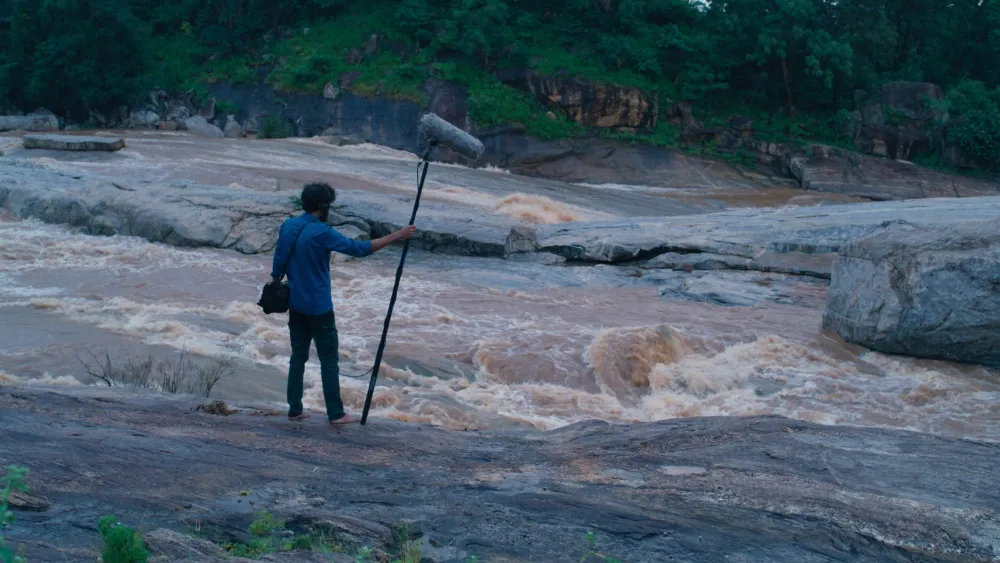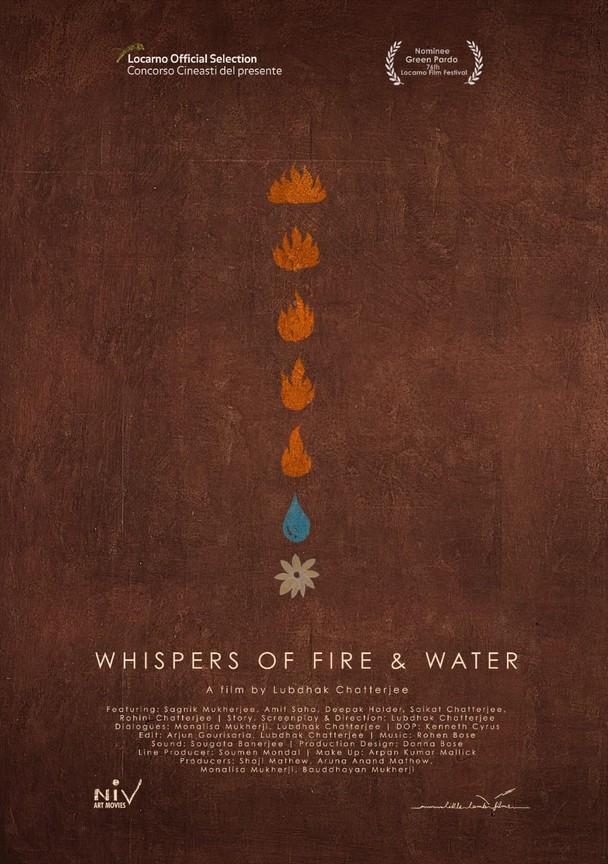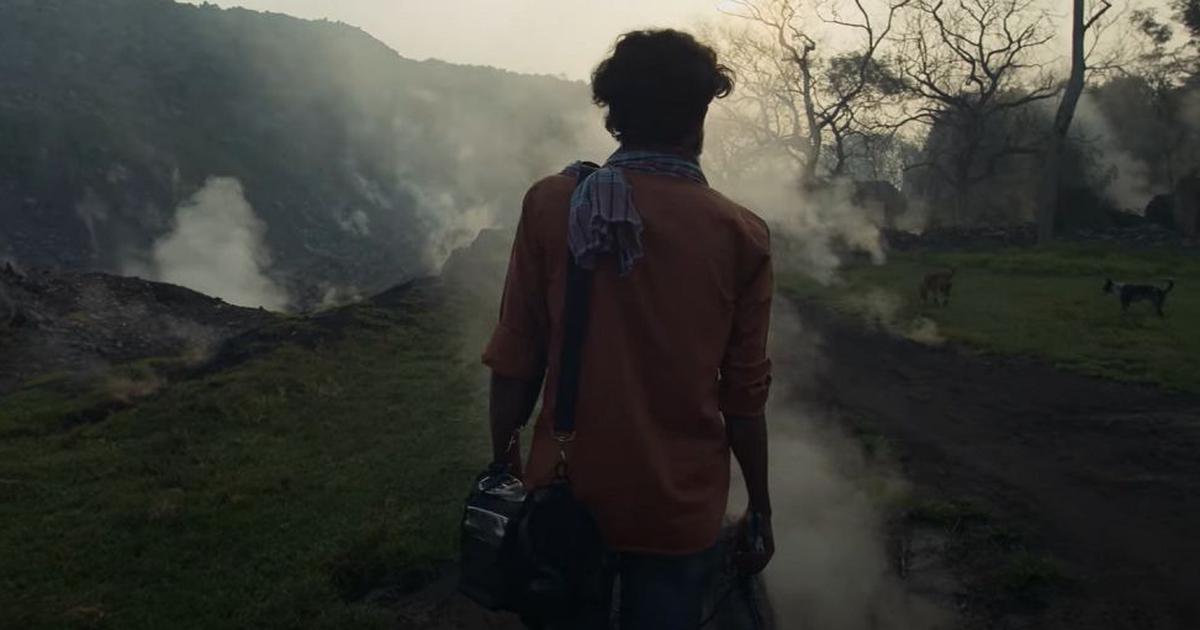In debutant filmmaker, Lubdhak Chatterjee’s Whispers Of Fire & Water we observe Shiva, an artist from Kolkata, visiting Jharia, a coal mining region in Eastern India, to gather sounds for his audio installation. He records sounds from whatever sources are available at his disposal. But in this grueling process, he witnesses the exhaustion of the region’s natural resources, and his visit’s purpose begins to wane. He discovers that the once beautiful landscape now suffers from depletion in the hands of those in power. Such exploit maneuvering, for ages, has also inadvertently affected the lives of the locals. The breathtaking beauty of the area is now infused with the suffocating presence of toxic gases emitted by fires burning for over a century. These fumes have devastated every living entity in the vicinity. Animals, miners, and the natural flora are involuntarily subjected to the noxiousness floating in the air. As Shiva becomes acquainted with the surviving people of the region, like migrant mine worker Deepak (Amit Saha) and non-resident professor Subir Roy, his responsibility as a committed artist versus a concerned human is called into question. As he grapples with the intricate socio-political exploitation by those in power, the peace of his mind is interrupted. Seeking solace, Shiva travels with Deepak to a region within the village, where water plays a crucial role in maintaining the region’s sanity. Here, he begins questioning his urban perspective and the fundamentals of his self-understanding.
Chatterjee cinematically scrutinizes the landscape as a decaying labyrinthine rural dystopia, where the mining site emerges as a bleak, shocking and nightmarish zone. As the film begins Shiva views himself as taking control of the situation as an individual on an assignment. He records the audio bytes with his gear like a bird who has the advantage of steering his boom mic wherever he pleases. But soon he discovers that his wings have been clipped as he could not access certain spaces. The presence of the police inspector (Deepak Halder) proves to be a major deterrent as he enquires how Shiva discovered art in a region that looks like a graveyard. In another scene, he strikes up an intimidating conversation with Shiva regarding a murder at a place where the helpless chap was unfortunately present. Similarly, a CRFF official, while patrolling the jungle, also questions Shiva as if he is an intruder. He now finds himself in a perilous situation that is perpetually beyond his control. Such deterrents push him into a state of turmoil, even though the journey to Jharia was meant to be an artistic endeavor. In contrast, Shiva also meets individuals who trigger a psychological change in his bearings. Subir Roy, a teacher, believes that it is only through education that the future generation can be pulled out from the dregs of victimization. Whereas, Deepak a miner, who refuses to leave his natives asks a profound question the protagonist shouldn’t the light reach their village rather than them looking for it? He also wonders why the erudite folks of the city pay money to the sounds of nature. We also get a brief glimpse of a journalist reporting how the chain of exploiting the natural resources as well as the localities of the region is an unending cycle. Through this character, the meaning of his life unfolds in a spellbinding pursuit for sense and provides him transient relief from the negativity surrounding the space.

The filmmaker has incorporated philosophical elements into the narrative to emphasize a point, support a cause, and shed light on injustices. Shiva’s journey becomes like an adventure, where reality intertwines with the whispers of fire and water. As reality sets in, curiosity and contemplation are triggered by reality. He moves around the maze of his mind grappling with eternal questions on his journey towards elusive convictions. But he eventually realizes that he has been pushed off-kilter and his attempt to lead a regular life amidst the constraints of civilization becomes disrupted and unbalanced. Moreover, when his artistic pursuits seem to turn out fruitless, he continues to remain elusive with certainty that leads him into an existential abyss. Amid this uncertain situation, one important fact becomes clear; maybe, this search for meaning is a show of the unyielding human condition. It emphasizes the necessity to build our own stories and narratives even though there are no definite answers. He eventually realizes that he has been pushed off-kilter and his attempt to lead a regular life amidst the constraints of civilization becomes disrupted and unbalanced.

The film heavily leans on the serene imagery of Kenneth Cyrus and the vivid soundscape by Sougata Banerjee. The cinematography enhances the director’s vision and the sense of time passing, immersing viewers in the grimy world of the mining fields as well as taking us deep into the lush and green territory of the forests suggesting the vastness and freedom offered by nature to humanity. The murky areas of the coal mines and the lush ambiance of the forest areas with pristine rivers bring a stark comparison between harsh reality and tranquil beauty. The lyrical realism of the framing with its perfectly matched tone and texture opens up a rich mosaic that exists between the rural landscapes and its inhabitants in a way that allows us to virtually inhabit these spaces. Whereas, the aural world enhances the layered narrative structure of the film beautifully creating a rustic flavor to interpret the theme of the film. Sougata Banerjee’s bravura audio design combines location sounds with effects that transport viewers to the actual locations. The impact of human intervention on nature is as visible as it is audible. Rohen Bose’s background score creates a seamless blend of our inner and outer worlds where imagination meets reality. The editing, by Chatterjee and Arjun Gourisaria, flows like mist, with long shots and slow edits, along with a soundtrack of insect sounds that make it feel like an out-of-body experience. Its mysterious rhythms perfectly align with an experimental, intuitive, and deeply personal vocabulary. This deliberate choice transforms the film into an experience meant to be felt, seeping into our consciousness almost reaching a mystical level.
Whispers Of Fire & Water provides a fresh and original evocation where the directorial control stresses the quotidian aspect and placid texture underscoring the turmoil of the characters’ struggle without resorting to exegesis. The style and subject matter represent a bold and innovative approach that seamlessly blends form and content into a cohesive whole.
Whispers Of Fire & Water was selected for the International Competition section at the 76th Locarno Film Festival and the 28th International Film Festival of Kerala in 2023.



